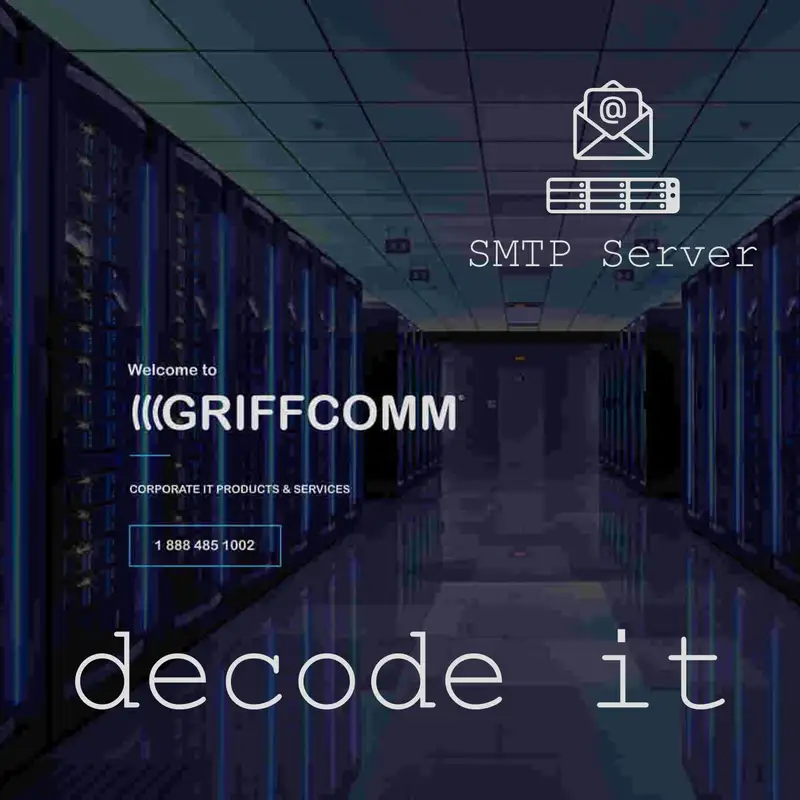Network Protocol - SMTP Server
SMTP (Simple Mail Transfer Protocol) Nov 1981
- Listens for connections on port 25 to receive messages from other SMTP servers, was also used for client software to connect to the server to send a message
- Port 587 was then used with TLS encryption to allow communication with client applications
Communication between computers started in the 1960's
As the governments ArpaNet came around in 1971 (in California) more PCs were being connected and therefore messages were being passed between the computers via
the SNDMSG program which Ray Tomlinson of Raytheon (BBN - Bolt, Beranek and Newman, Inc) adapted to send messages
At that point no standard was in place, however talks had started about protocols such as Mail Box Protocol and Mail Protocol
Nov 1977 FTP service was used to move and store messages between computers (we covered the FTP server in an earlier episode)
the SMTP standard came around in 1981, as FTP was used before, that would explain why the SMTP protocol is based on sequential text commands very similar to FTP service method
SMTP ran in parallel with another protocol called UUCP (Unix to Unix Copy Program) which is best suited for systems not always connected to a network,
UUCP was mostly used in Usenets newsgroups however UUCP protocol is practically no longer used
Both SMTP and UUCP use a store and forward method to move messages.
SMTP had no encryption or authentication methods so was highly susceptible to hijacking, also the SMTP server was generally an open relay, meaning it would receive and forward any message, by 2002 only 1% where left this way due to ISP blocking the use of open relay SMTP servers, essentially making SMTP impractical by its original design
Nov 1995 SMTP was extended by allowing extensions to be added to the service and was then known as ESMTP
The late 1990's most companies had an SMTP server to allow messages to move between employees and send messages to other companies located on the internet, however due to the emerging internet more employees would be outside the office and require sending messages to staff and contacts in other companies, this turned the simple SMTP server in to a communication hub with client application software to facilitate secure connection to move a message, thereby making it a bridge for a client on a mobile device to transport a message back in to the company securely then out to another receipient who was also on the internet through there own SMTP / client communication hub.
SMTP was originally design for text only, attaching files wasn't possible, so MIME (Multipurpose Internet Mail Extensions) was added and relied on the receiving message agent to decode that message, i remember in the late 1990's (and still today) hearing "i have an attachment arrived as MIME.dat" requiring decoding, most of this was due to Microsoft Outlook, unable to decode the message (not good for a mail client whos only job is to read email messages).
2012 saw an addition of UTF-8 from just ASCII offering the ability of the use of other latin and Chinese characters. Ive bumped in to this issue a fair amount this year (2025) with regards HTTP reverse Proxy servers and its character code set not being UTF-8, a subject for another episode.
Generally how an SMTP works is the client will connect to the server either on port 25 or 587 using TLS encryption, it will send a series of commands via text to the SMTP server then a stream of ASCII data that is the message body.
SMTP is for sending and receiving text based messages, the client software uses a totally different protocol, such as POP (post office protocol), IMAP which supported mailbox folder trees, then later ActiveSync and Microsoft's EAS, all of which are subjects for other episodes.
SMTP is highly secure when you and the recipient owns your own SMTP email servers, as the connection between them is direct, encrypted and doesn't use any cloud based corporate systems such as outlook.com and gmail.com servers, your message is direct from you to the receiving server and generally is encrypted via TLS.
Beyond emails there are other private hosted services which can replace cloud based services like Whats App, the soon to be deprecated Skype keeping all your text, voice and video calls private, encrypted and totally out of the cloud, however thats a subject for another episode.

